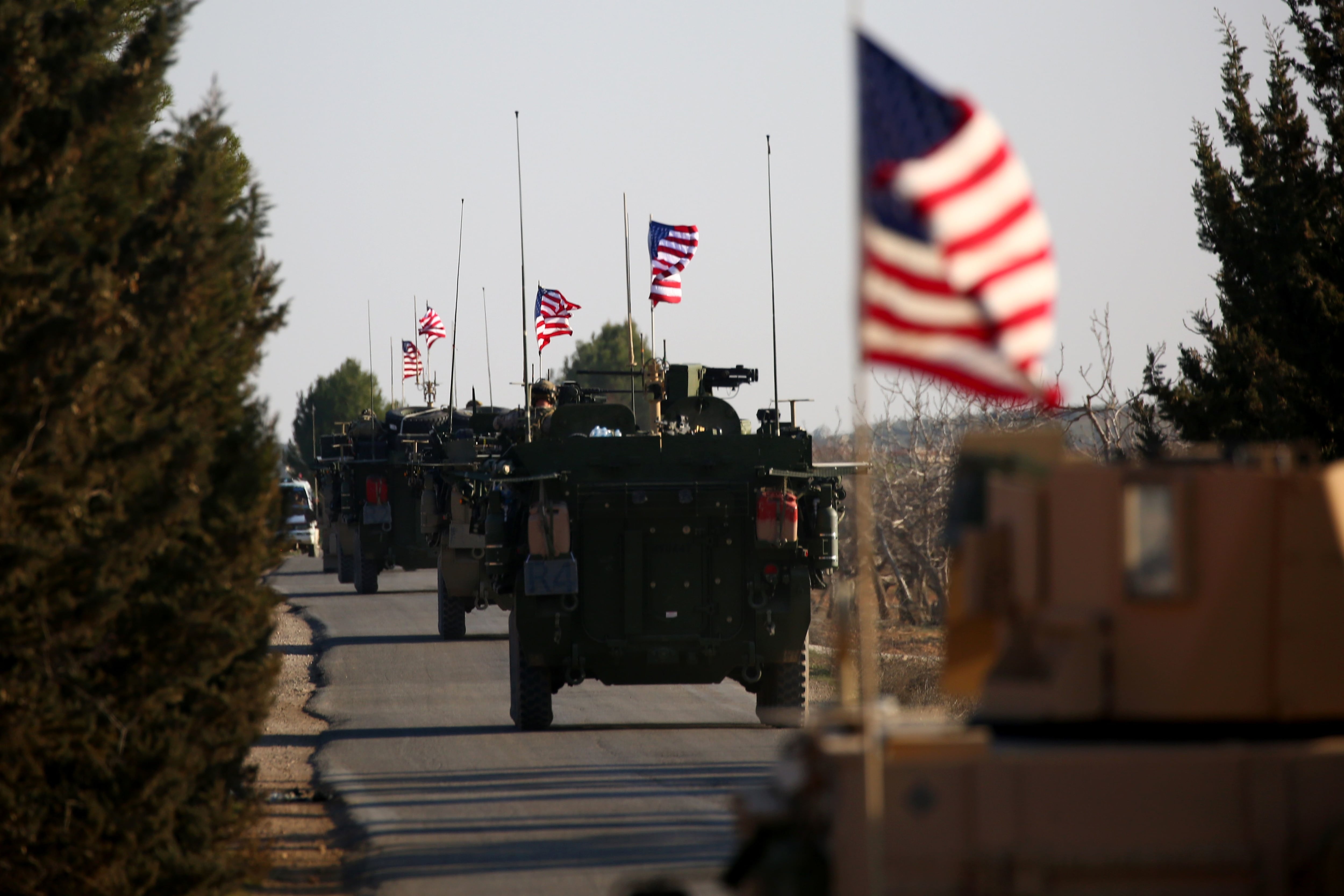The U.S. military has sent nearly 100 Army Rangers into the Syrian city of Manbij. But there is something highly unusual about this particular deployment.
The elite soldiers, who typically operate in the shadows, arrived in armored vehicles festooned in brightly colored American flags, a gesture designed to make their presence abundantly obvious. And unlike the other 15,000 U.S. troops on the ground in active war zones, the Americans in Manbij are not conducting "counter terror" or "advise and assist" operations.
Rather, the Pentagon has quietly unveiled a new kind of mission: It's called "reassurance and deterrence."
There are no Islamic State extremists in rubble-strewn Manbij. ISIS fled in defeat many months ago. Instead, the city is occupied by a council of Kurdish militia fighters whom the U.S. has supported for many years. And all around the city are forces backed by the Turkish military, a fellow NATO member that's played a significant role in eradicating ISIS strongholds in Syria.
The problem is that even though both groups are U.S. allies, the Turks and the Kurds despise each other. Like so many other groups in the Middle East, it’s an ethnic rivalry that dates back centuries. And so, when Turkey's outspoken president recently called for Manbij to be liberated from the Kurds, the Rangers were sent in to "make sure the parties on the ground aren't shooting at each other," says the Pentagon’s top spokesman, Navy Capt. Jeff Davis.
This is a dangerous task that raises several questions.
First:
What exactly are the Americans supposed to do if the Turks and Kurds start shooting at each other? The Pentagon won't disclose the answer, other than to say U.S. personnel retain the right to defend themselves.
Second:
Are they trained for a "reassurance and deterrence" mission and, if so, what does that entail? For most of the past 15 years, the military's predeployment workups have focused on preparing for conventional war and counter-insurgency fights. What tactics, techniques and procedures are unique to the operation in Manjib? Has the Army given these soldiers the tools to be successful?

A convoy of U.S. military vehicles drives near the village of Yalanli, on the western outskirts of the northern Syrian city of Manbij, on March 5, 2017.
Photo Credit: Delil Souleiman/AFP/Getty Images
Third:
What is the Pentagon's strategy in Manbij? Its broader objective in Iraq and Syria is to defeat the Islamic State. How does the deployment of 100 American soldiers into Manbij further that goal? It sounds like mission creep.
Fourth:
Do military leaders, specifically the Joint Chiefs of Staff, truly endorse this mission — or is it strategic drift? On its surface, "reassurance and deterrence" looks and feels half-baked, a plan that mostly relies on vestiges of former President Obama's vision for the Middle East. Was this necessitated by the strategic vacuum resulting from the White House's difficulty assembling a stable national security team?
Fifth:
What does victory look in Manbij? Surely, no one believes a brief deployment of a few dozen U.S. troops will end centuries of regional rivalry between the Turks and the Kurds. How will the Pentagon know when its "reassurance and deterrence" mission is complete and whether it was successful?
These Americans are operating in the open where they are vulnerable to attack, whether intentional or accidental. The recent arrival of Russian military forces to Manbij only heightens that risk. It is imperative for the president and the Pentagon to explain their plan for ensuring this city remains secure, so its residents can start to rebuild — and so the U.S. can pull out. "Reassurance and deterrence" is not a long term strategy.





